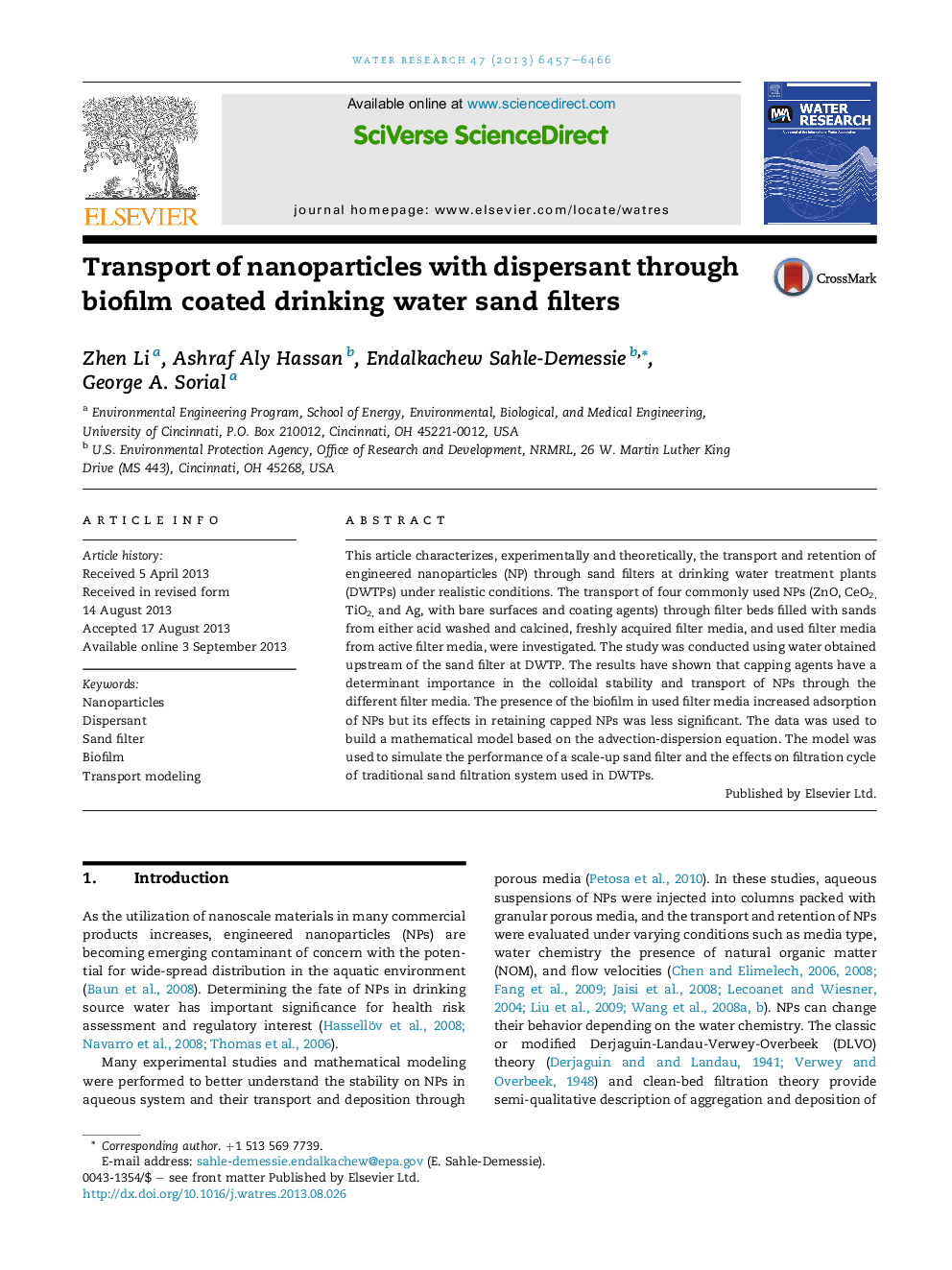| کد مقاله | کد نشریه | سال انتشار | مقاله انگلیسی | نسخه تمام متن |
|---|---|---|---|---|
| 4481897 | 1316840 | 2013 | 10 صفحه PDF | دانلود رایگان |

• Filtration of engineered nanoparticles (NPs) in drinking water supplies was studied.
• NPs with bare surfaces can be successfully removed from raw water using sand filters.
• Polymer coating increased mobility NPs minimal retention on the filter sand.
• Biofilm coating on real filter media increased filter removal efficiency.
• Model simulation indicates NPs reduce water quality and shortens the filtration cycle.
This article characterizes, experimentally and theoretically, the transport and retention of engineered nanoparticles (NP) through sand filters at drinking water treatment plants (DWTPs) under realistic conditions. The transport of four commonly used NPs (ZnO, CeO2, TiO2, and Ag, with bare surfaces and coating agents) through filter beds filled with sands from either acid washed and calcined, freshly acquired filter media, and used filter media from active filter media, were investigated. The study was conducted using water obtained upstream of the sand filter at DWTP. The results have shown that capping agents have a determinant importance in the colloidal stability and transport of NPs through the different filter media. The presence of the biofilm in used filter media increased adsorption of NPs but its effects in retaining capped NPs was less significant. The data was used to build a mathematical model based on the advection-dispersion equation. The model was used to simulate the performance of a scale-up sand filter and the effects on filtration cycle of traditional sand filtration system used in DWTPs.
Journal: Water Research - Volume 47, Issue 17, 1 November 2013, Pages 6457–6466